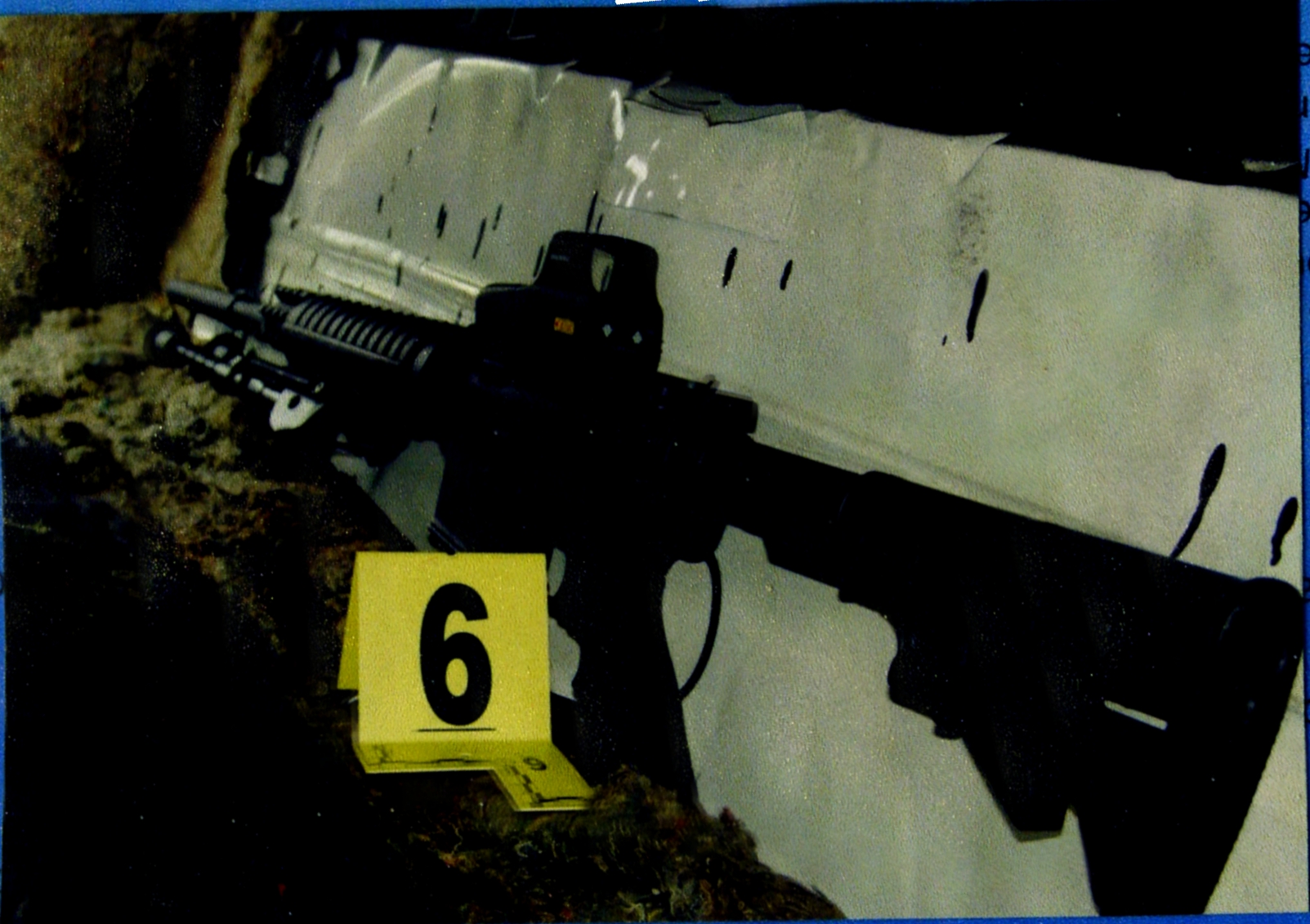The Inside Story of Snagging the Beltway Snipers: Stopping 23 Days of Random Terror
November 29, 2018 David Reichenbaugh
This is Part One of a four-part series on the 2002 Beltway Snipers killing spree in collaboration with the former criminal intelligence operations commander for the Maryland State Police and commanding officer at the scene during the snipers’ capture in Myersville, Md.
October 2, 2002, a Michaels craft store window in suburban Montgomery County, Md., exploded from a high caliber bullet. Later that same day, 55-year-old James D. Martin, a program analyst for the National Oceanic and Atmospheric Administration, was shot in the parking lot of Shoppers Food Warehouse in Wheaton, Maryland.
And so began a manhunt that shattered nerves across the D.C. area that would only begin to calm after an intensive monthlong, multijurisdictional cat-and-mouse hunt to stop the terror.
The shot into the craft store missed its target. But over the course of 23 days, 10 citizens in Maryland, Virginia, and the District of Columbia had been shot and killed with another four victims surviving their wounds. The shootings were completely random, without regard to race, sex, religion, or gang affiliation. All the victims were shot using a high-power .223 caliber Bushmaster rifle fired from a concealed location, without regard to the time of day — a string of shootings in rapid succession to kick off the spree in Montgomery County unfolded in broad daylight.
In October 2002, a little over a year since the terrorism attacks on the World Trade Center in New York, the Pentagon in Virginia across the river from the nation’s capital, and the foiled attack on the U.S. Capitol or Camp David in the mountains of Maryland that ended in a field in Shanksville, Pa., the nation was holding its collective breath. We were also only a few months removed from the deadly anthrax attacks and the case was still very much open with a motive shrouded in mystery.
Purchase the book by clicking the photo. HSToday may receive a small advertising share for your purchase.
Since the worst domestic terrorist attack in U.S. history may have started in our own backyard, along with deaths associated with the anthrax case, the Maryland State Police was in the process of rapidly standing up a long-dormant Criminal Intelligence Division. The goal was to get boots on the ground infiltrating known nefarious groups, identifying any newly identified potential threats, listening, and disrupting any potential terrorist threats that may still be lurking in Maryland. It was painfully obvious that we could not depend on the FBI on their own to do this type of work in our own backyard and it was our responsibility to do what we could to protect Maryland from the new terrorist threat that had landed in our laps. Cooperation across jurisdictional lines would be needed.
The division also had the responsibility of identifying the hundreds of potential targets for future attacks located within the state’s borders, working with those companies and agencies in hardening the potential targets, and coordinating with our many allied federal, county, and city police agencies to work together in a united effort to prevent the next terrorist attack that all of us knew deep in our gut was coming. It was not a matter of if, but when – and could we disrupt it before it gets started.
As Operations Commander for the Criminal Intelligence Division, it was my job to help make some sense out of gathered intelligence, which resulted from our covert activities as well as intelligence gathered from open sources. Oct. 2 started like any other day for me, going over intelligence reports from the night before and making notes of which allied agencies I needed to reach out to that day to compare notes. Those relationships, forged out of necessity with our allied federal and surrounding state and local agencies since the tragedy of 9/11, would ultimately prove fruitful as the Beltway Snipers case unfolded.
Initially, it was suspected that the shootings had to be the work of an organized terrorist cell that had infiltrated the Washington, D.C., metropolitan area with the goal of instilling fear in the citizenry and showing the citizens that their police and government were helpless to protect them. Initially, nothing else made any sense. If that was the plan of the unidentified cold-blooded killers, it was certainly working. Citizens were in fear, squatting behind their cars as they filled the gas tanks. Gas stations and business erected tarps to help shield their customers from view or placed paper over the windows to prevent the killers from having a view of the inside of their businesses.
Schools in the D.C. area, known as the DMV, were locked down and in some instances closed. All extracurricular activities including the fall scholastic football season had been canceled. The few shoppers who were still out there ran from their cars to and from the stores. Employees ran in a zigzag manner to get inside their building as quickly as possible. The economic impact of the sniper’s reign of terror to our nation’s capital region was never calculated but had to be immense. Life as American citizens knew it came to a complete stop for those 23 days in October.
The sniper investigation from the onset quickly became one of the largest, most intense manhunts in American law enforcement history. At the height there were close to 1,000 agents, troopers, officers, and deputies working the case, from federal agencies to local police departments. The relationships formed as the result of Sept. 11 played a key component and helped keep the SNIPMUR Task Force focused, and the participants from all the agencies working together as a unified team. It was this team that ultimately led to the snipers’ capture and brought to a close to their 23-day rampage.
As I indicated, initially all of us including federal agencies that went all the way to the attention of the president thought this was a well-planned terrorist event. As the shootings continued over the three-week period, the killers began to leave us notes. It became clear these were not terrorists. They were two people with a god complex who enjoyed killing, enjoyed their newfound publicity as this case was on the 24-hour news cycle, and were hoping to extort money out of the government.
The killers were certainly not sophisticated by any stretch of the imagination. In fact, their notes decorated in a child’s star stickers demanding that we get them the money thru a stolen debit card showed their complete lack of sophistication. However, they were smart enough to carefully plan their attacks and fitted out a rather run-of-the-mill blue Caprice to use as a sniper platform. They listened very carefully to the round-the-clock news coverage and knew they were safe since the task force spent most of the 23 days of this investigation looking for two shooters in a white van or box truck.
They responded to the idle threat of the Maryland governor calling them cowards, and vowing that authorities would protect our children, by shooting a 13-year-old child the following day as he exited his mother’s car to run into his middle school.
The Beltways Snipers case became an obsession for those of us working on the task force. Unidentified killers were killing our citizens randomly and it did not seem like there was a thing we could do to stop it. However, determination, guts, and the full resources of the federal state, city, and county governments – and the bloodhound mentality of some of the best cops in the country – would ultimately lead to their capture at a mountainside rest area in Frederick County, Md
Check out Homeland Security Toady under the Law Enforcement Section to see article 1 and all of the pictures associated with a four part series about the beltway sniper investigation and the impact of the multi-jurisdictional task force concept on law enforcement today. The author, Retired Maryland State Police Lt. David Reichenbaugh and author of In Pursuit the Hunt for the Beltway Snipers has completed the four article series with article #1 getting published on November 29th. Check out Homeland Security today.us











